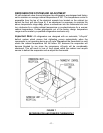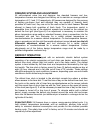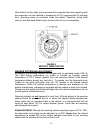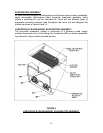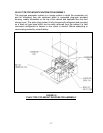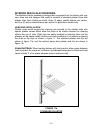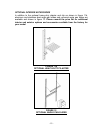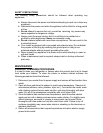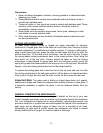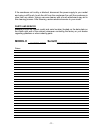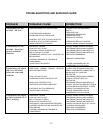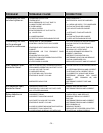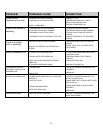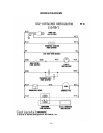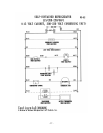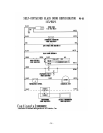
- 21 -
Precautions
1. Never use harsh detergents, cleaners, scouring powders, or chemicals when
cleaning your model.
2. Strong bleaches tend to corrode many materials and should never come in
contact with stainless steel.
3. Tincture of iodine, or iron should not come in contact with stainless steel. These
solutions, which cause stainless steel to discolor, should be rinsed off
immediately if contact occurs.
4. Some foods, such as mustard, mayonnaise, lemon juice, dressings or salts,
may attack or corrode stainless steel.
5. Gritty, hard abrasives will mar the finish of stainless steel and aluminum and
are not recommended.
SLIDING AND HINGED GLASS
All glass doors whether sliding or hinged are easily removable for cleaning.
Removal of a hinged glass door is the same as a solid door (see "removal of doors
and door adjustment" in installation and location section). To remove a sliding door,
slide it open about half way, grasp the door on both sides and lift up to clear the
bottom door track. Tilt the door out at the bottom. Use the top of the door to ease
the spring-loaded closing mechanism back to the closed position. Now, bring the
door down out of the top track. Caution should be taken so that the closing
mechanism is not allowed to spring back from the half-open position since the
spring will go past the closed position and may pop out of the top track. Should this
happen, move the closing mechanism back to the closed position.
To replace the sliding glass door, insert the door in the top track and use it to slide
the closing mechanism to the half-open position. Lift the door so it clears the bottom
track, push in to align the door with the track, and let the door down into the track.
Important Note: The glass used in sliding or hinged glass doors is of special,
sealed pane design and cannot be replaced with ordinary window or plate glass. If
it becomes necessary to replace the glass, it can be obtained directly from the
factory.
GENERAL PREVENTATIVE MAINTENANCE
Performance of the air cooled condensing unit located on the top of your new
model, depends exclusively upon the amount of air passing through the condenser
fins. Your refrigerator or freezer will run more efficiently, consume less current, and
provide a maximum of trouble-free service throughout its lifetime if the condenser is
kept clean and an adequate supply of clean, cool air is provided at all times.
Periodically (at least once a month) inspect the condenser coil, which is located
directly behind the front top grill, to check for debris or blockage.



